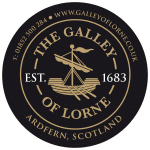
our Peninsula
Be ye Man - or Bairn - or Wumman
Be ye gaun - or be ye comin,
For Scotland's Pride - no Scotland's shame
Or, richly brown, ream owre the brink,
Gether ye litter - an tak it Hame!
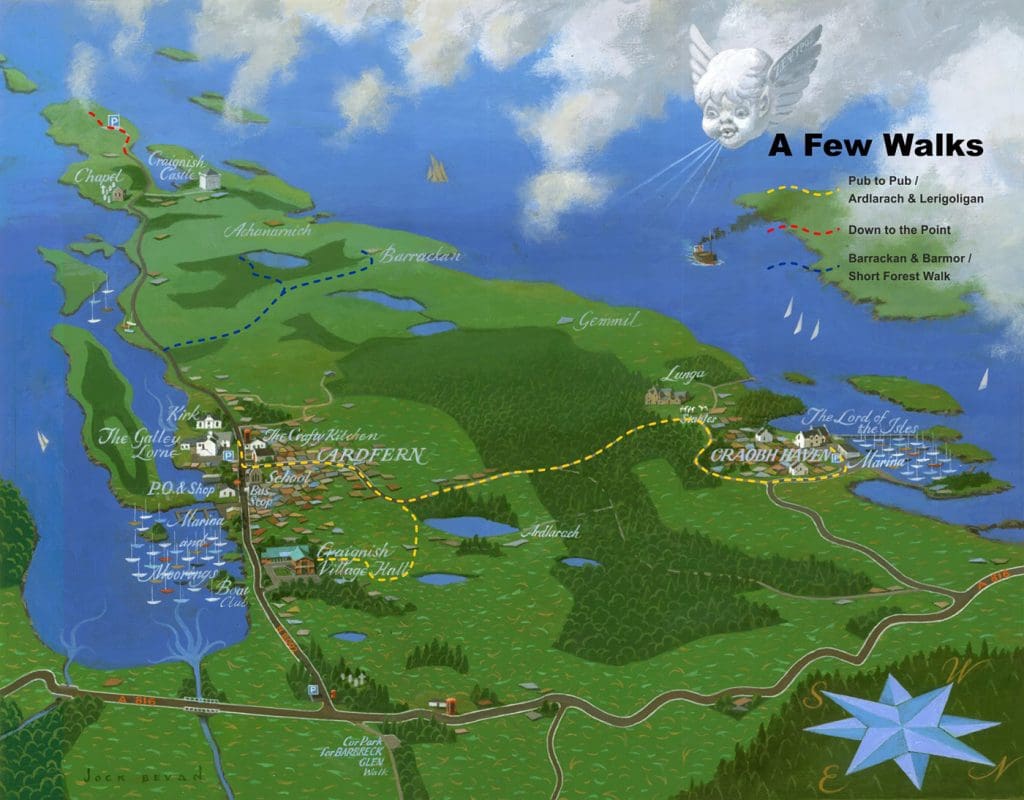
The area where Ardfern is located is known as the cradle of Scottish Christianity, with the Island of Iona close by, historical Kilmartin glen with its stone circles and cairns, and also the Dunadd, the ancient capital of the Kingdom of Dalriada (500AD).
Ardfern was a fishing and crofting village and had its own pier built in the 18th century, which was also later used as a calling point for steamers and puffers.
Today, Ardfern has its own marina which boasts many yachting visitors from around the world. The Ardfern Yacht Centre is the perfect place to start your exploration of the Inner Hebrides. Loch Craignish is very sheltered and has no tidal access problems or lock gates.
The area where Ardfern is located is known as the cradle of Scottish Christianity, with the Island of Iona close by, historical Kilmartin glen with it’s stone circles and cairns, and also the Dunadd, the ancient capital of the Kingdom of Dalriada (500AD).
Craignish Point is a headland of Argyll and Bute that lies at the southern end of the Craignish peninsula, at the seaward end of the mouth of Loch Craignish. From here there are views across the Sound of Jura towards the island of Jura to the south and north west towards Scarba.
There are many great walks in and around Craignish, here are just a few short ones. These are very rough descriptions and as you will notice our map, though beautiful (thank you, Jock) gives very little detail. For more, get a copy of OS Explorer map 358 – ‘Lochgilphead and Knapdale North.’ It is nearly always a good idea to wear boots or wellies and take waterproofs and a mobile. Wherever you are walking, please leave all gates as you find them, don’t litter and keep dogs under control.
Strong Atlantic currents and unusual underwater topography conspire to produce a particularly intense tidal race in the Corryvreckan channel. As the flood tide enters the narrow area between the two islands it speeds up to 8.5 knots (≈16 km/h,≈10 mph), and also meets a variety of seabed features including a deep hole and a rising pinnacle. These features combine to create whirlpools, standing waves and a variety of other surface effects.
The Corryvreckan is the third largest whirlpool in the world, and is on the northern side of the gulf, surrounding a pyramid-shaped basalt pinnacle that rises from depths of 70 m to 29 m at its rounded top. Flood tides and inflow from the Firth of Lorne to the west can drive the waters of Corryvreckan to waves of over 30 feet (9 m), and the roar of the resulting maelstrom can be heard ten miles (16 km) away.
Although not, as is sometimes believed, formally classified by the Admiralty as unnavigable (the Admiralty’s West Coast of Scotland Pilot guide to inshore waters calls it “very violent and dangerous” and says “no vessel should then attempt this passage without local knowledge”), the nearby ‘Grey Dogs’, or ‘Little Corryvreckan’, are classified as such. Experienced scuba divers explore the waters, described as “potentially the most dangerous dive in Britain”.
Our Favourite Walks
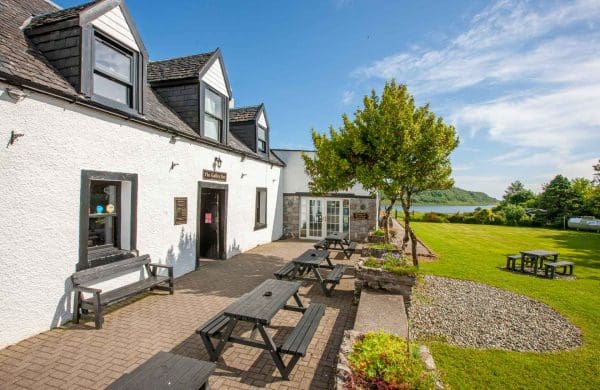
Pub to Pub
Perhaps the most popular and easiest walk is from The Galley of Lorne pub in Ardfern to The Lord of the Isles in Craobh across the Lunga Drive, arriving just in time for lunch/supper. Or vice versa depending where you start. The route is marked in yellow on the map.
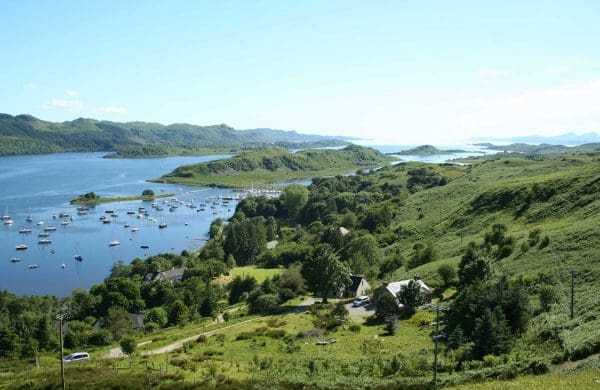
Ardlarach & Lerigoligan
This walk takes you on to the old road, which used to run down the middle of the peninsula rather than along the coast. Start off walking towards Craobh Haven, but just past where the tarmac finishes take the right fork. Continue, bearing right at the next fork, just past the cattle grid, until you approach a cottage. The track runs in front of the cottage and up some stone steps leading to two chalets. At the top of the steps, turn right, go through the gate ahead of you and bear slightly right, uphill. Near the top of this slope, the track appears to peter out, but turn left on the grass and you will soon see it ahead of you again. Carry on to the top of the rise, then on down the track until you see houses below you and a gate on your right. Go through the gate and down the hill, eventually coming out in the village hall car park. Also marked in yellow on the map.
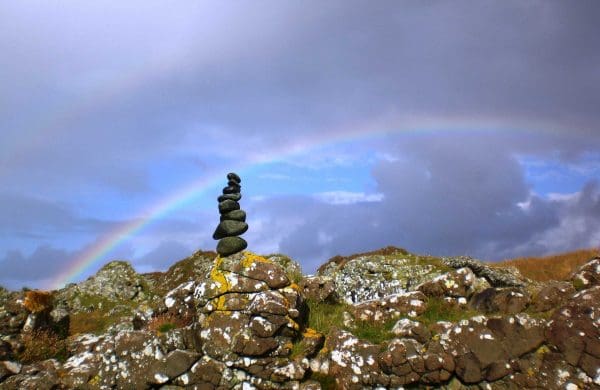
Down to the Point
To get a good view of the Corrievreckan whirlpool, either walk or drive south on the main road from Ardfern leaving Kilvaree chapel on your left and Craignish Castle on your right. After about three miles you reach a gate, just before a cottage. Continue along the track until you come to the car park by the pier – a great spot from which to watch the sun setting in the west. Walk on south; the track, which crosses a bog then snakes up the side of the hill, is easy to find. The views from the hill are spectacular. In some conditions, the standing wave near the Scarba shore - and the turbulent water - can be seen with the naked eye, but for a really good view, take binoculars. Carry on down to the point itself and you may even see an otter. Last section marked in red on the map.
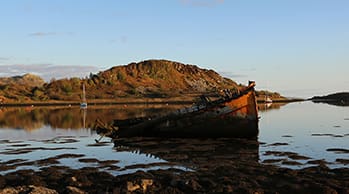
Barrackan & Barmor
Just over half a mile south of the centre of Ardfern, take the track on your right, immediately before 'Heron's Cottage'. Walk up the track, which leads past the entrance to Corranmor farmhouse and over two cattle grids. The track continues for about a mile, going through one gate en route, until it bends sharply to the right, giving wonderful views westwards to Scarba, Jura and Mull. At this point, if you are feeling energetic, take the rough track to your left and head up the hill. It's a short, steep climb, but the panoramic view when you reach the trig point at the top is well worth the effort. If you're interested in history, continue downhill on the track and past the front of Barrackan, the large house at the bottom, until you reach a gate leading into a field. Turn right in the field and walk round the edge until, in about 300 yards, you see a small mound to the west of the path. Lying on the ground is a stone, 6 feet long, with two small crosses and a large pecked design like two Bs back to back. This stone (Leac an Duine Choir - 'Flat stone of the Just Man') is said to have been taken as a lintel for the farmhouse, but was replaced when 'a voice came every night asking for it to be put back'. Marked in dark blue on the map.
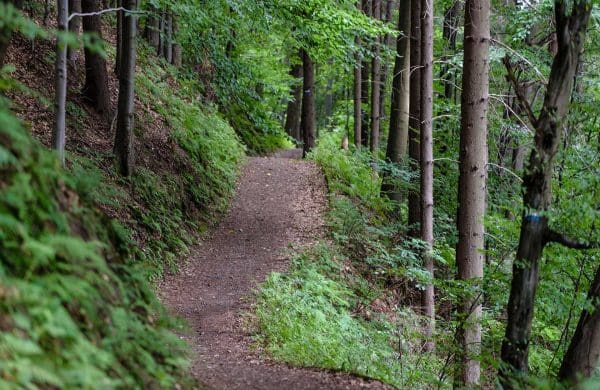
Short Forest Walk
Start off as for the previous walk, but about 300 yards past the second cattle grid, take the track which goes off to the left. This brings you to a stile which leads into a fir plantation. From here, the route is marked by official walkers' signs. The walk leads past a freshwater loch, where there is a seat. Also marked in dark blue on the map.


